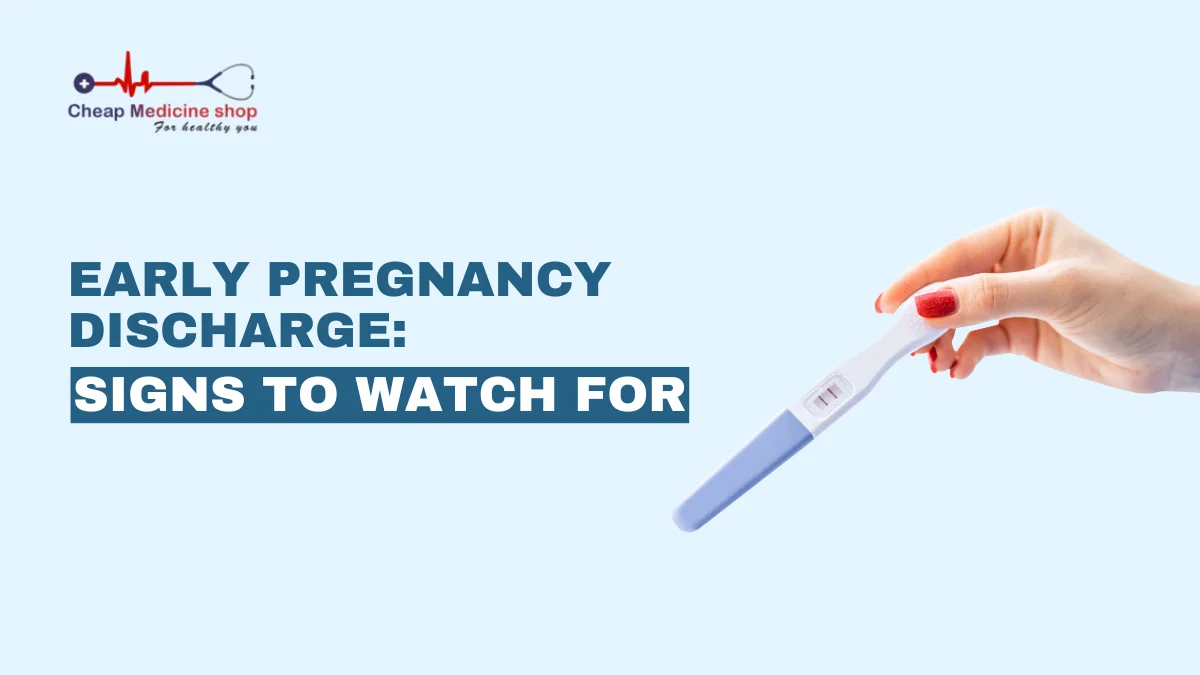Pregnancy brings many changes to your body, and early pregnancy discharge is one of the most common yet often misunderstood signs. Many women notice alterations in their vaginal discharge even before they miss their period, making it an important early indicator of pregnancy.
Understanding what’s normal and what requires medical attention can help you confidently navigate this exciting but sometimes worrying time.
This article will help you recognise the different types of early pregnancy discharge, understand when to seek medical care, and distinguish between regular pregnancy changes and potential concerns that need professional attention. Read on for expert guidance.
What is early pregnancy discharge?
Early pregnancy discharge refers to the vaginal secretions that occur during the first few weeks of pregnancy. This discharge is a regular part of your body’s response to pregnancy hormones, particularly Progesterone, which increases significantly after conception.
During pregnancy, your cervix produces more mucus to create a protective barrier against bacteria that could harm your developing baby. This natural defense mechanism results in increased vaginal discharge, which can also be considered an early pregnancy symptom, as it may differ from what you experienced before conception.
Progesterone plays a crucial role in pregnancy by helping maintain the uterine lining and supporting early fetal development. One of its side effects is increased cervical mucus production, which leads to more noticeable discharge early in pregnancy.
Types of normal early pregnancy discharge
Early pregnancy discharge comes in several forms, each essential for protecting your developing baby. Understanding these variations can help you recognise what’s normal for your body:
White discharge
White discharge during early pregnancy is typically thick, creamy, and milky in appearance. This type of discharge is generally odourless and doesn’t cause itching or burning. The consistency may resemble what you notice before your menstrual period, but it often appears in larger amounts.
This white discharge is a protective barrier, helping prevent harmful bacteria from travelling through the cervix to the uterus.
Clear and watery discharge
Clear discharge in early pregnancy often appears thin and watery, similar to what you might notice during ovulation. This transparent discharge is completely normal and indicates healthy hormone levels.
Some women describe it as looking like egg whites (early pregnancy egg white discharge), which is particularly common in the first trimester. This clear, stretchy discharge helps maintain the proper pH balance in the vagina and supports a healthy environment for early pregnancy.
Light brown discharge
Light brown discharge in early pregnancy can concern many women, but it’s often completely normal. This type of discharge typically occurs when small amounts of blood mix with regular vaginal secretions, creating a brownish color.
Brown discharge in early pregnancy is often linked to implantation bleeding, which may appear as small drops of blood or brownish discharge when the fertilised egg attaches to the uterine wall about 6 to 12 days after conception.
Mucus discharge in early pregnancy
Mucus discharge during early pregnancy is thick, sticky, and often colourless or white. This cervical mucus forms what’s known as the mucus plug, which seals the cervical opening and protects the developing baby from bacteria and infections.
Mucus discharge can vary in consistency from thick and sticky to thin and stretchy, depending on individual hormone levels and the stage of pregnancy. This variation is normal.
Increased mucus discharge
Many women notice a significant increase in vaginal discharge during pregnancy. This increased discharge in early pregnancy is caused by higher levels of Estrogen and Progesterone, which stimulate the cervix to produce more mucus discharge in early pregnancy.
The amount can vary significantly between women, but most notice it becomes more abundant than their usual pre-pregnancy discharge. This mucus forms part of the protective plug that seals the cervical opening.
Discharge before period vs early pregnancy
Understanding the difference between discharge before your period and discharge during early pregnancy can help you identify potential pregnancy signs. Pre-menstrual discharge often decreases in the days leading up to your period, while early pregnancy discharge typically increases and continues.
Pre-period discharge usually becomes thicker and stickier, while early pregnancy discharge tends to remain more fluid and abundant. The timing is also different – pregnancy discharge does not follow your usual menstrual cycle pattern and may appear when you would normally expect your period to start.
When to seek medical care
While most early pregnancy discharges are typical, sure signs indicate that you should contact your healthcare provider immediately. Recognising these warning signs can help protect your health and your baby’s well-being.
Abnormal colours and textures
Changes in colour and texture often signal potential infections or complications that need medical attention.
- Green or yellow discharge: May indicate a bacterial infection
- Cottage cheese-like texture: This could suggest a yeast infection
- Frothy or bubbly discharge: Might indicate Trichomoniasis (a genital parasite)
Concerning symptoms
These symptoms, alongside discharge changes, require immediate medical evaluation:
- Strong, unpleasant odor
- Itching or burning sensation
- Pain during urination
- Pelvic pain or cramping
- Heavy bleeding (more than spotting)
How to manage early pregnancy discharge
Managing early pregnancy discharge properly helps maintain comfort and prevents infections during this critical time. Here are practical steps to follow:
- Wear cotton underwear for better air circulation.
- Change underwear daily or when it becomes damp.
- Avoid douching, which can disrupt natural pH balance.
- Use mild, unscented soap for external cleaning only
- Use liners if the discharge is heavy, but never tampons during pregnancy.
- Choose breathable fabrics and loose-fitting clothing.
- Change panty liners frequently to maintain freshness and prevent bacterial growth.
- Maintain good overall hygiene without over-cleaning the vaginal area.
Conclusion
Early pregnancy discharge is a normal and healthy part of pregnancy that serves essential protective functions for you and your developing baby. Understanding what’s normal – including white discharge, clear discharge, and even light brown discharge – can help reduce anxiety during this exciting time.
While increased discharge in early pregnancy is typically nothing to worry about, it’s important to recognize warning signs that require medical attention. Remember that every woman’s experience with early pregnancy discharge is different, and what’s normal for one person may not be the same for another.
If you have any concerns about your discharge or other early pregnancy symptoms, don’t hesitate to contact your healthcare provider for personalized guidance and reassurance.
Frequently Asked Questions
Can pregnancy discharge indicate the baby’s gender?
No, early pregnancy discharge cannot indicate your baby’s gender. Hormone levels determine the type, color, or amount of vaginal discharge and do not correlate with whether you’re carrying a boy or girl. Gender can only be determined through ultrasound or genetic testing.
Does early pregnancy discharge have any relationship with morning sickness?
Yes, both early pregnancy discharge and u003ca href=u0022https://www.cheapmedicineshop.com/blog/womens-health-pregnancy/morning-sickness-during-pregnancy/u0022u003emorning sicknessu003c/au003e are caused by rising pregnancy hormones, particularly Progesterone and Human Chorionic Gonadotropin. However, having more or less discharge doesn’t predict whether you’ll experience morning sickness. These symptoms can occur independently of each other.
Can early pregnancy discharge affect intimacy?
No, increased discharge during early pregnancy is normal and shouldn’t affect intimacy unless it causes discomfort. If discharge has an unusual odor or color or causes itching, consult your healthcare provider before resuming sexual activity to rule out infections.
Is it normal for early pregnancy discharge to vary day by day?
Yes, it’s entirely normal for early pregnancy discharge to fluctuate daily. Hormone levels naturally vary; factors like hydration, stress, and physical activity can influence discharge consistency and amount. Consistent abnormal symptoms require medical evaluation.
Can certain foods affect early pregnancy discharge?
Yes, while diet doesn’t directly change discharge characteristics, staying well-hydrated and eating a balanced diet supports overall vaginal health. Excessive sugar intake may increase the risk of yeast infection, affecting discharge. Probiotics may help maintain healthy vaginal bacteria balance.
Cheap Medicine Shop only refers to credible, authoritative sources for our content. If you’re curious about how we ensure the integrity of our content, we encourage you to read our Content Information Policy.


















